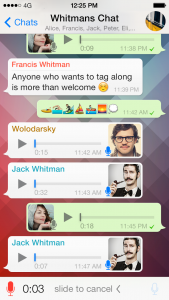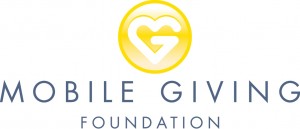 A decade ago, Short Messaging Service (SMS), better known as “texts,” were the only alternative we had to voice for connecting via mobile devices. Today, it’s joined by many other options. Yet people are still sending texts like wildfire.
A decade ago, Short Messaging Service (SMS), better known as “texts,” were the only alternative we had to voice for connecting via mobile devices. Today, it’s joined by many other options. Yet people are still sending texts like wildfire.
SMS is perhaps the simplest type of communication via mobile devices. Text messages can be sent and received using any mobile phone. They do not require a data plan, and use the same 10-digit phone number for which you’re already familiar. But SMS is also the most rudimentary option, not as reliable or conversational as instant messaging, limited to basic letters without expressive emoticons, and there’s no confirmation that the recipient has actually received them. Using SMS can be likened to using a rotary phone at home when there are so many digital and cordless options available.

The ways we communicate with one another electronically are rapidly advancing. Instant messaging is becoming a key preference; Facebook’s recent purchase of the WhatsApp messenger service for US$16 billion is clear evidence of that. With IM, you get a confirmation of the delivery of a message, can have group chats, and engage in secure conversations. With devices like the BlackBerry, a user gives out a unique PIN number instead of his phone number. Add live video chat and social media to the equation, and SMS pales by comparison.
But SMS has one important advantage over other modes of mobile communication: it does not require a data plan.
How long will that advantage matter, though?
According to IDC, 2013 was the first year that smartphone shipments surpassed feature phones, and the research firm predicted last summer that smartphones would account for more than half (52.2%) of all mobile phones shipped worldwide by the end of the year.
This suggests that as pricing for both the hardware and data plans come down, consumers are shifting over to data-capable smartphones. Even without subscribing to data plans, customers can still connect via Wi-Fi to enjoy the many communicative benefits beyond texting.
So that begs the question: why still SMS?
Despite all this, the numbers SMS continues to pull in are staggering. According to the Canadian Wireless Telecommunications Association (CWTA), Canadians continue to send nearly 270 million text messages per day. With approximately 27 million wireless subscribers in Canada, that’s an average of 10 messages per person, per day.
SMS remains that reliable “back up” to communicate when you don’t have a data plan, when you’re somewhere without data access, or when you’re traveling and have turned data roaming off. It’s also an integral tool for verification purchases: some banking transactions, like Interac e-transfers, can be confirmed via SMS. And many charities rely on SMS for donations: The Mobile Giving Foundation https://mobilegiving.ca accepts monies for causes like UNICEF and the Canadian Red Cross through SMS short-codes. Short-codes are also an essential part of the 21st Century reality television craze: viewers can typically vote for their favourite competitors by calling a 1-888 number, or sending a text to a short code.
What we also can’t forget is that SMS is a lucrative moneymaker for carriers: texting costs essentially nothing to facilitate, but many carriers still charge customers $0.15 per message, or nominal monthly fees for texting bundles. And they use SMS for marketing purposes, to promote plan add-ons, travel packs, and other services to customers.
For these reasons, it seems that despite how antiquated a technology SMS is, texting will likely continue to be in the mix for some time to come.



